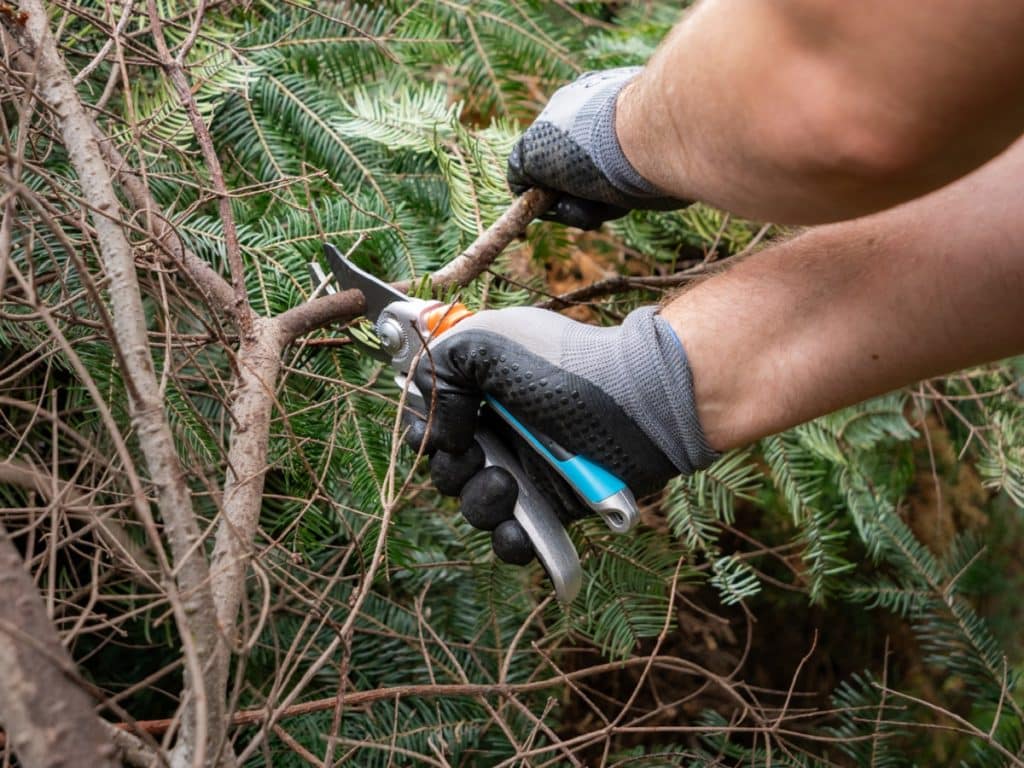Trees have a way of detecting and tracking days when temperatures go below freezing that tells them when to be dormant for the winter. However, homeowners can also take steps to help prepare trees for winter. We offer fall trimming tips below.
Wrap the Tree Trunk
According to the Morton Arboretum, tree damage in the winter is caused by fluctuations in temperatures during the fall and winter months. Minimize this type of damage by wrapping the trunk of the tree. Trees like maple, linden, and honey locust have thin bark, which makes them susceptible to frost damage. To help prevent this damage, wrap the trunks of your trees with commercial tree wrap. For younger trees, you should also wrap the first branches on the tree.
Mulch the Base of Your Trees
Trees need protection from soil evaporation in the winter. Apply 2-4 inches of wood chips, paper, fallen leaves from your trees, or other organic materials around the tree’s base and not directly against it. If you have tree stumps on your property, they can be removed in the fall and the chips left over can be used as mulch.
Trim Outside the Branch Collar
Trim branches around the point where a tree joint connects to a larger one. Doing so reduces the risk of affecting new growth in the spring.
Trim Branches Correctly
Reduce and shape branches that are still small enough to cut with hand trimmers. Cut limbs 1/4 inch above the bud on the outside of the plant to direct new growth. Cut at a 45-degree angle to minimize water and disease damage. Larger branches should be cut three times with the first two cuts minimizing branch weight, and the last cut promoting callus growth.
Don’t Trim Too Early
Reduce the risk of damaging your trees by waiting until late fall or early winter to trim them. At least wait until the trees go dormant – when the last leaves have fallen. Trimming too early can interfere with trees’ natural preparations for winter while the tree is still thriving.
Focus on Damaged Branches
Don’t just randomly trim trees. Instead, cut off dead, dying, or diseased tree branches. Also, look for branches that are grown together or too close to one another. Opening the canopy of the tree also reduces the risk of disease while letting more light through in the spring and summer.
Remove Suckers and Water Sprouts
Suckers and water sprouts (growths that sprout up from the tree) at the ground level weaken tree trunks and rob the tree of nutrients from the primary tree. Remove these growths and focus on one tree as the dominant one. Creating strong trees reduces the risk of damage from winter storms and high winds.
Contact Woodland Tree Service in Plymouth, Minnesota for more information about our tree trimming and tree care services.







